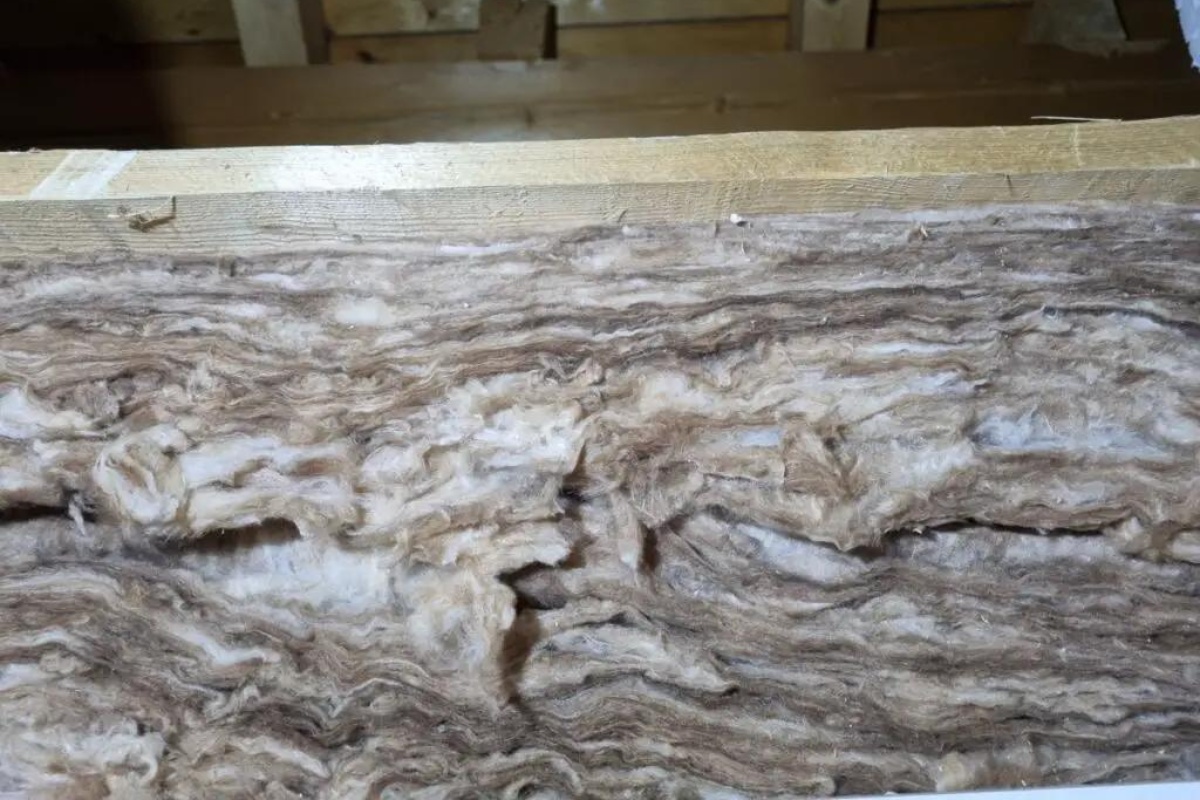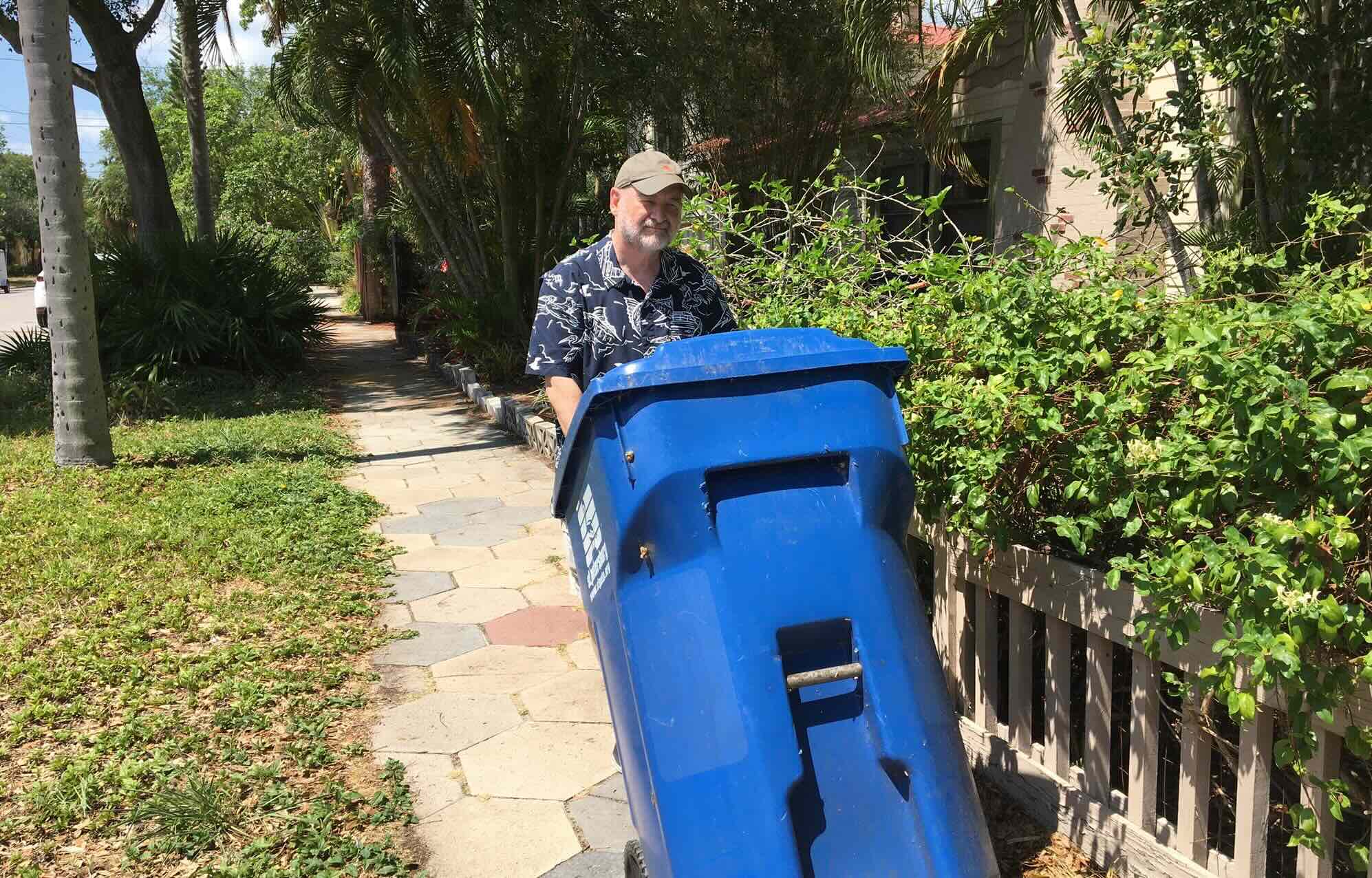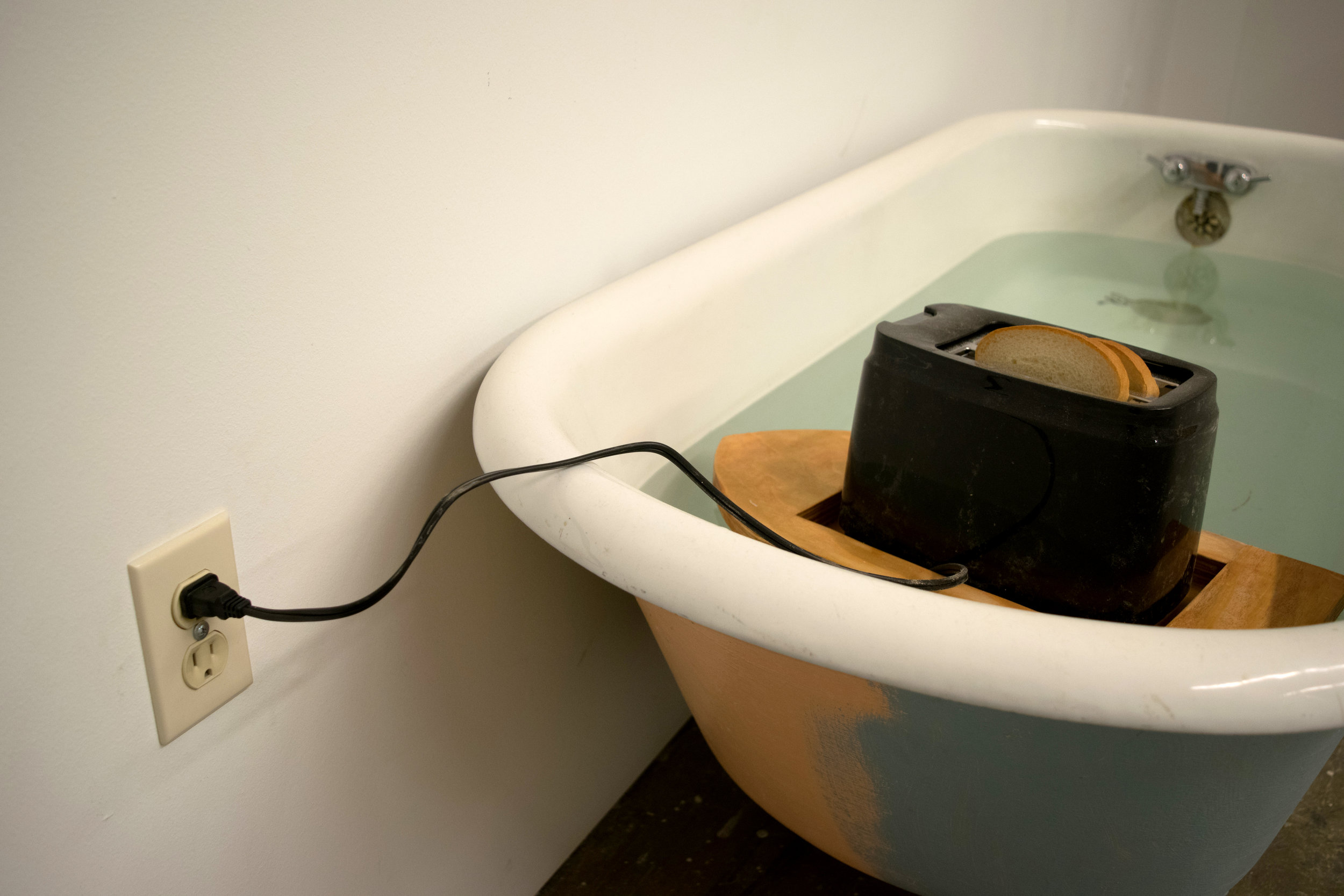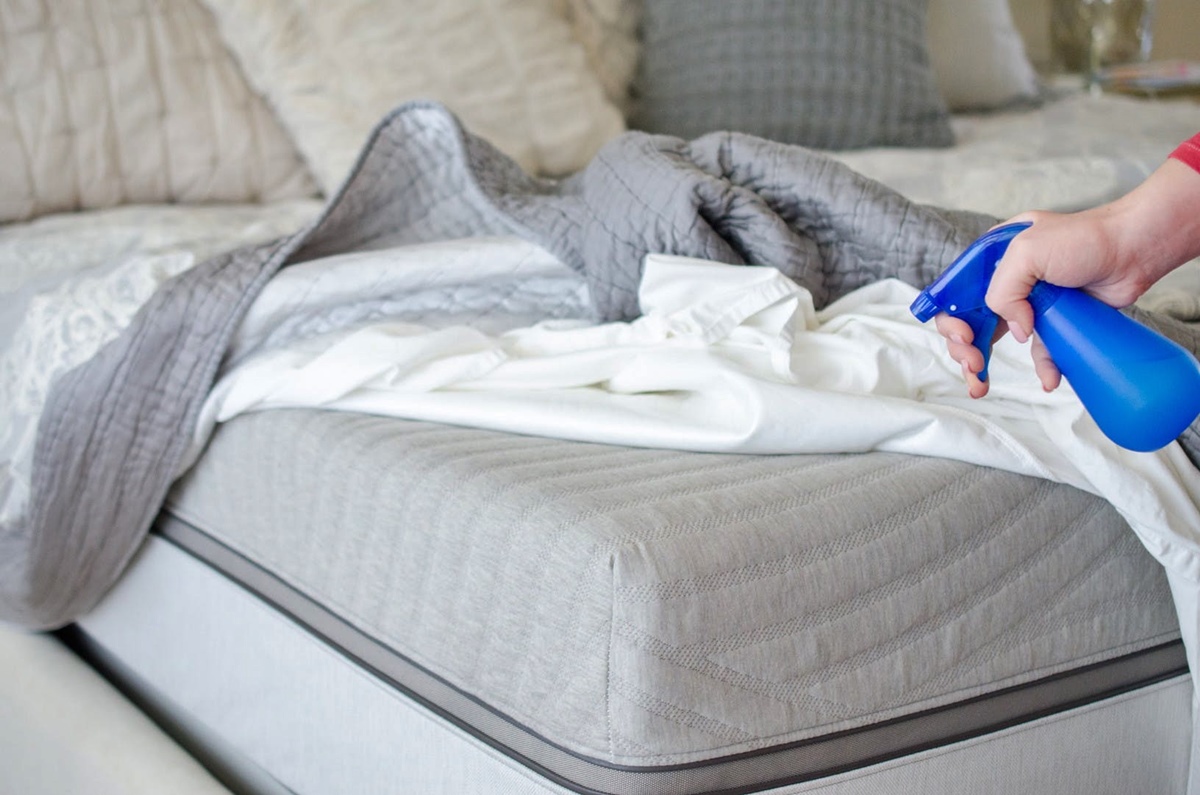

Articles
What Happens When You Breathe In Insulation
Modified: May 6, 2024
Discover what happens to your body when you breathe in insulation with informative articles. Learn about potential health risks and safety precautions.
(Many of the links in this article redirect to a specific reviewed product. Your purchase of these products through affiliate links helps to generate commission for Storables.com, at no extra cost. Learn more)
Introduction
Insulation plays a crucial role in keeping our homes and buildings comfortable, energy-efficient, and protected from the elements. It is widely used in walls, ceilings, and floors to minimize heat transfer and maintain a consistent indoor temperature. While insulation is essential for creating a more efficient living environment, it is important to be aware of the potential risks associated with the materials used and the process of installation.
In this article, we will explore what happens when you breathe in insulation and the potential health effects it can have. We will delve into the various types of insulation, how they work, and the precautions you should take to minimize the risks of inhalation. So, let’s dive in and understand the impact of insulation on our respiratory health.
Key Takeaways:
- Understanding the potential risks of inhaling insulation particles is crucial for anyone working with insulation materials. By taking necessary precautions and seeking medical attention if symptoms arise, individuals can minimize health risks and create a safer working environment.
- Proper ventilation, wearing protective gear, and following safety guidelines are essential when working with insulation. Prevention and early intervention are key in dealing with insulation inhalation, emphasizing the importance of prioritizing safety and seeking professional help for larger projects.
Read more: What Happens If You Touch Insulation
What is insulation?
Insulation is a material used to reduce the transfer of heat, sound, or electricity between different areas or surfaces. It acts as a barrier to slow down the flow of heat or sound by trapping air pockets or using materials with low thermal conductivity.
Insulation is commonly used in buildings to regulate the temperature, improve energy efficiency, and enhance comfort. It helps to keep the heat inside during cold weather and prevents heat from entering during hot weather. Insulation materials can range from natural fibers such as wool and cotton to synthetic materials like fiberglass, foam, and cellulose.
Insulation is typically installed in various parts of a building, including walls, attics, roofs, and floors. It comes in different forms, such as blanket insulation, loose-fill insulation, rigid insulation boards, and spray foam insulation. Each type of insulation has its own advantages and is selected based on factors such as building design, climate conditions, and budget.
The primary function of insulation is to reduce heat transfer through conduction, convection, and radiation. Conduction occurs when heat moves through a solid material, like when the heat from your hand is conducted through a metal spoon. Convection involves the movement of heat through a fluid, such as warm air rising and cool air sinking. Radiation is the transfer of heat through electromagnetic waves.
By effectively reducing these forms of heat transfer, insulation helps to maintain a more comfortable indoor environment, reduces energy consumption, and lowers heating and cooling costs. Insulation also helps to reduce noise transmission between rooms and provides a barrier against moisture and condensation.
Overall, insulation is a vital component in modern buildings, contributing to energy efficiency, sustainability, and occupant comfort. However, it is important to be aware of the potential risks associated with insulation inhalation, especially during installation and renovation projects.
Types of Insulation
There are various types of insulation available, each with its own unique properties and applications. The choice of insulation depends on factors such as the location, climate, and desired level of thermal performance. Here are some common types of insulation:
- Fiberglass Insulation: Fiberglass insulation is made from small glass fibers that are spun into a fluffy material. It is one of the most widely used insulation types due to its affordability and effectiveness. Fiberglass insulation comes in batts or rolls and is commonly used in walls, attics, and floors.
- Spray Foam Insulation: Spray foam insulation is made by combining chemicals that react and expand into a foam when applied. It can be sprayed into gaps and crevices, creating an airtight seal. Spray foam insulation provides excellent thermal insulation and is often used in areas that are difficult to insulate with other materials.
- Cellulose Insulation: Cellulose insulation is made from recycled paper or plant fibers. It is treated with chemicals to make it fire-resistant and resistant to pests. Cellulose insulation is blown into walls, attics, and other areas using a special machine. It is known for its high thermal performance and eco-friendly properties.
- Rigid Foam Insulation: Rigid foam insulation is a type of insulation board made from foam materials like polystyrene or polyisocyanurate. It comes in rigid panels that provide excellent thermal resistance. Rigid foam insulation is commonly used in exterior walls, roofs, and foundations.
- Mineral Wool Insulation: Mineral wool insulation is made from rock or slag fibers. It is available in batts, rolls, or loose-fill form. Mineral wool insulation is fire-resistant and provides good thermal insulation and soundproofing properties.
- Natural Fiber Insulation: Natural fiber insulation is made from materials like wool, cotton, or hemp. It is a sustainable and environmentally friendly option that provides good thermal and acoustic insulation. Natural fiber insulation is often used in eco-friendly and energy-efficient buildings.
These are just a few examples of the wide variety of insulation options available. When choosing insulation, it is essential to consider factors such as R-value (thermal resistance), installation requirements, durability, and environmental impact.
Next, we will explore how insulation works to reduce heat transfer and maintain a comfortable indoor environment.
How Does Insulation Work?
Insulation works by minimizing the transfer of heat between the inside and outside of a building. It does this by creating a barrier that hinders the flow of heat through conduction, convection, and radiation.
Conduction: Conduction is the transfer of heat through a solid material, such as when you touch a hot pan and feel the heat transfer to your hand. Insulation materials are designed to have low thermal conductivity, meaning they are resistant to heat transfer by conduction. They slow down or block the flow of heat from warmer areas to cooler areas.
Convection: Convection occurs when heat is transferred through a fluid or gas, such as warm air rising and cool air sinking. Insulation helps to reduce heat transfer by convection by trapping air pockets within its structure. These air pockets act as barriers, preventing the movement of warm air and keeping the indoor space insulated.
Radiation: Radiation is the transfer of heat through electromagnetic waves, such as the heat radiating from a hot stove. Insulation materials with reflective surfaces, like aluminum foil, can reflect the radiant heat, reducing its impact on the indoor environment.
Insulation materials are chosen for their ability to resist heat transfer and their thermal resistance, measured as the R-value. The higher the R-value, the more effective the insulation is at reducing heat transfer. Different areas of a building may require different levels of insulation, depending on climate conditions and energy efficiency requirements.
When insulation is properly installed, it creates a continuous thermal envelope around the building, helping to regulate indoor temperatures. This means that in winter, insulation helps to retain the heat generated by the heating system and prevent it from escaping. In summer, insulation acts as a barrier, preventing outdoor heat from entering the building, thereby reducing the need for excessive air conditioning and keeping the interior cool.
It is important to note that proper installation of insulation is crucial for its effectiveness. Gaps, voids, or compressed insulation can reduce its ability to provide optimal thermal performance. Improper installation can also compromise the airtightness and moisture resistance of the building envelope.
By reducing heat transfer and maintaining a more stable indoor environment, insulation not only improves comfort but also helps to reduce energy consumption, lower utility bills, and minimize the environmental impact of heating and cooling systems.
However, it is essential to be aware of the potential risks associated with insulation inhalation and take necessary precautions when working with insulation materials. We will discuss these risks and safety measures in the following sections.
The Risks Associated with Insulation Inhalation
While insulation is an essential component in buildings, it is important to be aware of the potential risks associated with inhaling insulation materials. These risks primarily arise during the installation or removal process, as airborne particles may be released and inhaled. The specific risks depend on the type of insulation material used. Let’s explore some of the common hazards:
Fiberglass Insulation: Fiberglass insulation consists of tiny glass fibers that can become airborne when disturbed. Inhaling these fibers can cause skin and eye irritation, as well as respiratory issues. Although fiberglass insulation is considered relatively safe, it is advisable to take precautions to avoid direct contact and inhalation of the particles.
Spray Foam Insulation: Spray foam insulation may release volatile organic compounds (VOCs) and isocyanates during installation. These chemicals can cause eye and respiratory irritation, as well as skin sensitization. It is crucial to follow proper safety protocols and use appropriate protective gear when working with spray foam insulation.
Cellulose Insulation: Cellulose insulation is generally considered safe, as it is made from recycled paper or plant fibers. However, the application and handling of cellulose insulation may generate fine particles that can be inhaled. In some cases, these particles may also contain chemicals used to treat the insulation for fire resistance. Precautions should be taken to minimize exposure to the dust particles.
Rigid Foam Insulation: Rigid foam insulation may release harmful gases when exposed to high temperatures or fire. Inhalation of these gases can cause respiratory irritation and other health issues. Proper ventilation and adherence to safety guidelines are essential when working with rigid foam insulation.
Mineral Wool Insulation: Mineral wool insulation, like fiberglass, has fine fibers that can irritate the skin, eyes, and respiratory system if inhaled. It is important to wear appropriate protective equipment, such as gloves, goggles, and dust masks, when handling and installing mineral wool insulation.
Natural Fiber Insulation: Natural fiber insulation, such as wool or cotton, is generally considered safe as it is made from organic materials. However, allergic reactions or respiratory sensitivities may occur in individuals who are sensitive to these fibers. Adequate ventilation and personal protective equipment should be used during installation to minimize exposure.
It is worth noting that the risks associated with insulation inhalation can vary depending on the individual’s sensitivity, duration of exposure, and the level of protective measures taken. If you suspect that you have been exposed to insulation particles or are experiencing any symptoms, it is important to seek medical attention.
Now that we understand the potential risks, let’s explore the specific health effects that can occur from breathing in insulation particles.
When working with insulation, always wear a mask to avoid inhaling any particles. Proper ventilation is also important to reduce the risk of respiratory issues.
Read more: What Happens When Insulation Gets Wet
Health Effects of Breathing in Insulation
Breathing in insulation particles can have various health effects, ranging from mild irritation to more severe respiratory issues. The specific health effects depend on the type of insulation material and individual sensitivities. Here are some common health effects associated with breathing in insulation:
Irritation of the Respiratory System: Inhaling insulation particles, such as fiberglass or mineral wool fibers, can irritate the respiratory system. This can lead to symptoms such as coughing, wheezing, chest tightness, and shortness of breath. People with pre-existing respiratory conditions, such as asthma or allergies, may be more susceptible to these effects.
Eye and Skin Irritation: Some insulation materials, including fiberglass and mineral wool, can also cause irritation to the eyes and skin. Contact with these materials may result in redness, itching, and inflammation of the affected areas. It is important to avoid direct contact with insulation materials and to wear appropriate protective clothing and eyewear during installation or removal.
Allergic Reactions: Certain individuals may be allergic to specific insulation materials. This can result in allergic reactions, such as sneezing, nasal congestion, itching, and hives. If you have a known allergy to a particular insulation material or have a history of allergies, it is important to take extra precautions and seek medical advice if necessary.
Respiratory Sensitization: Prolonged or repeated exposure to insulation particles can lead to respiratory sensitization. This means that an individual’s immune system becomes sensitized to the particular substance, causing allergic reactions or asthma-like symptoms upon subsequent exposures. Proper ventilation, personal protective equipment, and adherence to safety guidelines can help reduce the risk of sensitization.
Chemical Exposure: Some insulation materials, such as spray foam insulation, may release chemicals during installation or in the event of a fire. These chemicals can be hazardous if inhaled. It is important to follow safety protocols and use appropriate protective gear to minimize chemical exposure.
If you experience any of these health effects after exposure to insulation particles, it is advisable to seek medical attention. A healthcare professional can provide a proper diagnosis and recommend appropriate treatment or management strategies based on your specific symptoms and sensitivities.
In the next section, we will discuss the common symptoms that may indicate insulation inhalation and the importance of taking precautions when working with insulation materials.
Common Symptoms of Insulation Inhalation
Inhaling insulation particles can result in various symptoms, which may vary depending on the type of insulation material and individual sensitivity. Here are some common symptoms associated with insulation inhalation:
Coughing and Wheezing: Irritation of the respiratory system caused by insulation particles can lead to persistent coughing and wheezing. These symptoms may be more pronounced in individuals with pre-existing respiratory conditions, such as asthma or bronchitis.
Shortness of Breath: Breathing in insulation particles may cause difficulty in breathing or shortness of breath. This can be a result of airway inflammation or constriction, and it may be accompanied by chest tightness or discomfort.
Nasal Congestion and Runny Nose: Irritation from insulation materials can result in nasal congestion and a runny or stuffy nose. This can be accompanied by sneezing and a sensation of nasal irritation or itching.
Eye Irritation and Redness: Insulation particles, particularly fiberglass or mineral wool fibers, can irritate the eyes, causing redness, itching, and watery eyes. Direct contact with the eyes should be avoided, and protective eyewear is recommended during installation or removal of insulation.
Skin Irritation: Some insulation materials may cause skin irritation upon direct contact. This can manifest as redness, itching, or a rash in areas that come into contact with the insulation. Wearing appropriate protective clothing can help minimize skin irritation.
Allergic Reactions: For individuals with existing allergies or sensitivities, exposure to insulation particles may trigger an allergic reaction. This can include symptoms such as sneezing, itchy or watery eyes, hives, or skin rash. If you have a known allergy, it is important to take extra precautions and seek medical advice if necessary.
Fatigue and Malaise: Inhaling insulation particles and experiencing respiratory symptoms can lead to general fatigue, a feeling of unwellness, and a lack of energy. This can be a result of the body’s immune response and respiratory strain caused by the insulation particles.
If you experience any of these symptoms after exposure to insulation particles, it is recommended to seek medical attention. A healthcare professional can provide a proper evaluation, diagnosis, and appropriate treatment options based on your specific symptoms and medical history.
Now that we understand the potential symptoms of insulation inhalation, let’s explore the precautions and safety measures that can help minimize the risks associated with working with insulation materials.
Precautions and Safety Measures While Working with Insulation
Working with insulation requires taking proper precautions to minimize the risks associated with exposure to insulation particles. Whether you are installing, removing, or handling insulation materials, here are some important safety measures to keep in mind:
1. Wear Protective Gear: Always wear appropriate personal protective equipment (PPE) when working with insulation. This includes safety glasses or goggles to protect your eyes from airborne particles, gloves to prevent direct contact with insulation materials, a dust mask or respirator to filter out particles, and long-sleeved clothing to cover your skin.
2. Ensure Adequate Ventilation: Proper ventilation is crucial when working with insulation materials to minimize the concentration of airborne particles. Open windows, use fans, or establish a mechanical ventilation system to ensure a constant flow of fresh air in the work area.
3. Handle Insulation Safely: Follow the manufacturer’s instructions and guidelines for handling and installing insulation materials. Avoid tearing or damaging the insulation, as this can release more particles into the air. Be careful when cutting or trimming insulation to minimize dust and debris.
4. Minimize Skin Exposure: Avoid direct contact between insulation materials and your skin. Wear long sleeves, long pants, and closed-toe shoes to minimize skin exposure. If direct contact occurs, wash the area thoroughly with soap and water.
5. Use Proper Installation Techniques: Follow proper installation techniques for the specific type of insulation you are working with. This ensures effective installation and minimizes the risk of insulation particles becoming airborne.
6. Clean Up Properly: After completing insulation work, clean up the work area thoroughly. Use a wet cloth or mop to wipe down surfaces and remove any loose particles. Avoid sweeping or vacuuming without proper filtration, as this can disperse particles into the air.
7. Dispose of Waste Properly: Dispose of insulation waste in accordance with local regulations. Seal the waste in plastic bags or containers to prevent particles from being released. Contact your local waste management facility for guidance on proper disposal methods.
8. Seek Professional Help for Large Projects: For larger insulation projects or projects involving hazardous materials, it is advisable to seek professional help. Professional contractors have the experience, knowledge, and equipment to handle insulation safely and effectively.
9. Know the Warning Signs: Be aware of the signs of overexposure or adverse health reactions to insulation materials. If you experience persistent or severe symptoms, such as difficulty breathing, dizziness, or chest pain, seek medical attention immediately.
By following these precautions and safety measures, you can minimize the risks associated with working with insulation materials and promote a safer working environment.
In the next section, we will discuss treatment options for insulation inhalation and how to address any potential health issues that may arise from exposure.
Treatment Options for Insulation Inhalation
If you have been exposed to insulation particles and are experiencing symptoms or health issues as a result, it is important to seek medical attention for proper evaluation and treatment. The specific treatment options for insulation inhalation will depend on the severity of symptoms and the individual’s medical condition. Here are some potential treatment options that may be recommended:
Symptom Management: Depending on the symptoms experienced, your healthcare provider may recommend over-the-counter medications to help manage respiratory symptoms like coughing, wheezing, or nasal congestion. These may include cough suppressants, decongestants, or antihistamines. However, it is important to consult with a healthcare professional before taking any medication to ensure appropriate and safe usage.
Respiratory Support: In more severe cases, your healthcare provider may prescribe bronchodilators or inhalers to help alleviate breathing difficulties associated with insulation inhalation. These medications work to relax the airway muscles and improve airflow.
Allergy Management: If you experience allergic reactions as a result of insulation inhalation, your healthcare provider may recommend antihistamines or allergy shots to help manage the symptoms. Avoidance of the specific insulation material to which you are allergic may also be necessary.
Environmental Control: To prevent further exposure and minimize symptoms, it is important to address the source of insulation particles in your environment. This may involve sealing or encapsulating exposed insulation, improving ventilation, or using air purifiers to filter out airborne particles.
Consultation with a Specialist: If symptoms persist or worsen, you may be referred to a specialist, such as a pulmonologist or allergist, for further evaluation and treatment. These experts can provide specialized care and guidance based on your specific symptoms and medical history.
It is important to note that prevention and early intervention are key in dealing with insulation inhalation. Taking proper precautions while working with insulation, such as wearing appropriate protective gear and ensuring proper ventilation, can help minimize the risk of exposure and potential health issues.
If you suspect that you have been exposed to insulation particles or are experiencing symptoms after exposure, do not hesitate to seek medical attention. A healthcare professional can evaluate your condition, provide appropriate treatment, and offer advice on how to prevent future exposure and manage any ongoing concerns.
Now that we have covered treatment options, let’s conclude our discussion on the potential risks and precautions associated with insulation inhalation.
Read more: What Happens When You Eat Glass
Conclusion
Insulation is a valuable component in buildings, helping to maintain comfortable indoor temperatures, improve energy efficiency, and reduce utility costs. However, it is important to be aware of the potential risks associated with inhaling insulation particles during installation or removal.
Different types of insulation materials, such as fiberglass, spray foam, cellulose, mineral wool, and natural fibers, come with their own set of risks and precautions. These risks include respiratory irritation, eye and skin irritation, allergic reactions, and sensitization. The severity of symptoms can vary depending on the individual’s sensitivity and the duration and level of exposure.
To minimize the risks associated with working with insulation, it is crucial to take necessary precautions and follow safety measures. This includes wearing appropriate personal protective equipment, ensuring proper ventilation, handling insulation materials safely, and employing proper installation techniques.
If you experience symptoms after exposure to insulation particles, it is important to seek medical attention for proper evaluation and treatment. Treatment options may include managing symptoms, providing respiratory support, allergy management, and addressing environmental controls to prevent further exposure.
Prevention is always better than cure, so taking proactive measures to prevent excessive exposure to insulation particles is essential. By following safety guidelines, seeking professional help for larger projects, and being aware of warning signs and symptoms, you can create a safer working environment and minimize potential health risks associated with insulation inhalation.
Remember, the goal is to enjoy the benefits of insulation while keeping yourself and your environment safe. By being mindful of the potential risks and taking appropriate precautions, you can ensure a comfortable and healthy living or working space.
So, stay informed, take care, and prioritize safety when working with insulation materials.
Curious about the latest advancements in home insulation? Our upcoming article on fiberglass insulation reveals some of the most remarkable products set to hit the market in 2024. This must-read piece will guide you through innovative materials that promise not only to enhance your home's thermal efficiency but also to redefine comfort and safety standards. Perfect for those planning future home upgrades or simply interested in staying ahead in the world of home improvement.
Frequently Asked Questions about What Happens When You Breathe In Insulation
Was this page helpful?
At Storables.com, we guarantee accurate and reliable information. Our content, validated by Expert Board Contributors, is crafted following stringent Editorial Policies. We're committed to providing you with well-researched, expert-backed insights for all your informational needs.














0 thoughts on “What Happens When You Breathe In Insulation”